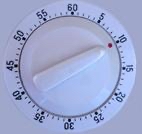Ten-Minute Methodology: Proof Summaries and Arguments 1
-
Created on 13 January 2015

By Judy Kellar Fox, CG® This post is part of an occasional series intended to educate and challenge BCG associates, aspirants, and the genealogical community at large.
This post is part of an occasional series intended to educate and challenge BCG associates, aspirants, and the genealogical community at large.
Our Proof Goals
We genealogists aim for accuracy in representing identities and relationships. We want to show why we believe people were who we say they were. We want to show that they really belonged with the folks we attach them to.
We follow the Genealogical Proof Standard to ensure that our research is thorough, our sources well documented, our reasoning levelheaded, and our conflicts resolved. Then we write up our conclusions. Standards 51 through 54 in Genealogy Standards describe the qualities we aim for in writing our proofs for the public, for ourselves, and for posterity.
Options for Writing Proofs
Standard 53 offers a division of proofs into statements, summaries, and arguments.
- Proof summaries are a little more complex and also rest on direct evidence. They are “relatively straightforward” and can be lists or narratives. Always, they present documentation. If there are conflicts, they are minor and easily explained.
- Proof arguments are still more complex and address cases where evidence conflicts or where direct evidence is absent. These are the challenging cases that require more explanation and often include tables, charts, or maps. [1
Both proof summaries and arguments can stand alone as work samples, or they may appear as parts of larger works. They can be very similar, only the complexity of the case distinguishing the two.
Understanding the Terminology of Proofs
What can be confusing is when a proof is a summary and when it’s an argument, and what to do about proofs that seem to be hybrids that aren’t defined in Genealogy Standards. Over time terminology has been changing. An example of a proof summary in an older publication may look more like the current definition of a proof argument.
A Continuum
We don’t have to get hung up over trying to create artificial boundaries between summaries and arguments. There’s an easier way to look at genealogical proofs than trying to determine whether we use a proof summary or a proof argument and to figure out which one to use when. It’s a continuum and looks something like this: [2]
There’s a big overlap between proof summaries and proof arguments in terms of their complexity and length: the grey area. Occasionally our proofs will naturally fall into the grey area, and that’s ok.
Naming types of proof isn’t our goal. Designing and writing them is. As we work with information we turn to research standards related to reasoning, for example Standards 47 (evidence correlation), 48 (resolving evidence inconsistencies), and 50 (assembling conclusions).[3] For choosing a format when writing, we rely on “Genealogical Proofs.”
Standard 53 gives us a general idea, from the type and complexity of evidence we have amassed, what type of proof we will write. Standard 54 reminds us of the importance of organizing evidence and sequencing it logically so it convinces readers of the accuracy of our conclusions.[4]
Examples
It’s fine and well to describe what proof should look like, but it’s important to see what it does look like. There’s an example of proofs that are part of a larger work right on the BCG website. This ascending genealogy provides proofs broken out into "Parentage" sections for three women.
- Elizabeth’s parentage, pages 1–2, rests on direct evidence. This is a proof in narrative format.
- Another, more complex, narrative on pages 12–13 summarizes proof of Mary’s parentage with a focus on her mother. It requires five paragraphs to describe and explain the evidence for Mary’s mother’s identity as well as the parental relationship.
- Proof of Barbara’s parentage on page 19 is presented in a numbered list. It derives from “Four pieces of direct evidence.” [5]
We see how the type and length of proof used depend on the type, quality, and reliability of the evidence available. More narrative is required to explain reasoning in cases where we have only second-hand information or when conflicts and/or indirect evidence is added into the mix. What we call our proofs is of minimal significance. What is really important is that we get them written!
Next time we'll look at more published examples of proofs.
Many thanks to Alison Hare, Laura DeGrazia, Stefani Evans, and Tom Jones for helpful input.
